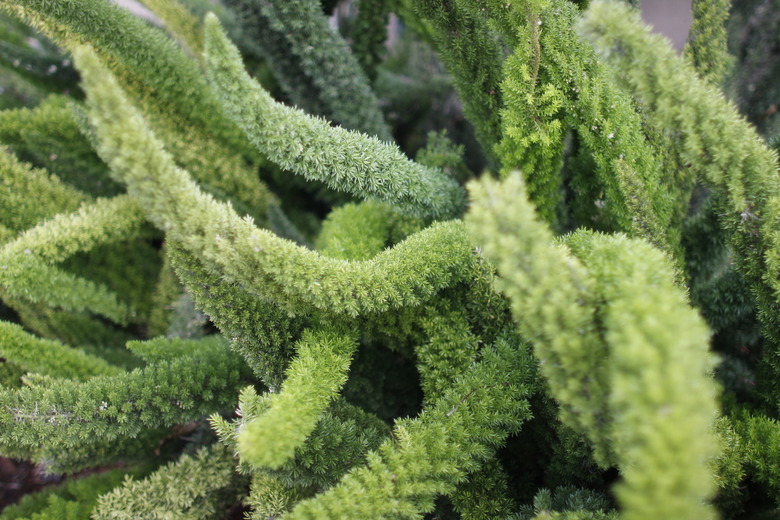How To Care For Foxtail Ferns
We may receive a commission on purchases made from links.
Planting and learning how to care for foxtail ferns adds beautiful greenery to your landscape. An evergreen, foxtail fern (Asparagus densiflorus 'Myersii,' USDA zones 9-11) has delicate-looking, plumed stems, which are lined with pointed, bright green leaves. Despite its ferny appearance, foxtail fern is also a flowering plant. Forming fluffy mounds up to 3 feet tall and up to 4 feet wide, foxtail fern works wells as a houseplant, specimen, container plant or border plant, requiring minimal maintenance and care. Foxtail ferns are generally free from pests and disease.
Care for Foxtail Ferns: Climate
Care for Foxtail Ferns: Climate
Foxtail fern grows outdoors as a perennial in U.S. Department of Agriculture plant hardiness zones 9 through 11, growing well in partial shade. Dappled sunlight is best with the plants being able to tolerate full sun in the morning but requiring at least partial shade from the harsh afternoon sun. If it gets too much sun, its leaves may drop. If you're growing multiple plants, space them 18 to 24 inches apart. Foxtail fern can tolerate temperatures as low as 20 degrees Fahrenheit.
Where not hardy, foxtail fern may be grown as a houseplant on a bright, sunny windowsill with temperatures between 60 and 75 F. The decorative red berries that follow small white flowers are mildly toxic if eaten, so warn children not to sample them.
Water Foxtail Ferns Regularly
Water Foxtail Ferns Regularly
Foxtail fern tolerates a range of soil types, as long as it is well-draining. Water regularly and deeply, allowing the soil to dry out slightly between waterings. Do not allow the soil to become flooded or waterlogged. Reduce watering in the winter, but do not allow the soil to become completely dry. Insufficient water may cause leaf drop.
If you're growing it in a container, choose a pot with at least one drainage hole. Don't leave extra water sitting in the pot saucer. Foxtail ferns do better when they don't sit in standing water. Increase humidity for indoor plants by placing the container on a tray with wet pebbles and misting the plant regularly with room-temperature water.
Fertilize Foxtail Ferns Monthly
Fertilize Foxtail Ferns Monthly
During the growing season, fertilize outdoor plants monthly with a slow-release fertilizer or a water-soluble foliage fertilizer, observing all label directions. Check the label as directions vary among brands. Fertilize indoor plants monthly during the growing season with a water-soluble houseplant fertilizer. Do not fertilize in winter.
You can also provide nutrition and improve the soil's structure by adding compost to the soil around your ferns, optimally amending the soil with compost when you plant the ferns. You can also use compost as mulch around the ferns.
Winter Care Considerations
Winter Care Considerations
Winter temperatures in the mid to low 20s F may damage foliage. If you live in an area with temperatures below 25 F, it's best to bring foxtail ferns inside for the winter if possible. Mature plants can sometimes survive frosts, particularly if you cover them with landscape fabric such as a floating row cover. In early spring, trim frost-damaged foliage to help the plant regain its good looks. Disinfect pruning equipment before and after making cuts by wiping the cutting blades with alcohol.
If there is no rainfall, water plants monthly during the winter months. To help prevent winter dehydration, mulch around the plant with 2 to 3 inches of organic mulch, such as shredded deciduous plant leaves or pine boughs. Remove the mulch in the spring, after the chance of frost has passed.
